Mercury Transit November 2019
On this page, I report on the Mercury transit on November 11, 2019, which we regrettably were neither able to observe nor photograph because the sky was overcast and gray. I was only able to follow the transit on a NASA web page (mercurytransit.gsfc.nasa.gov/2019)
Mercury transits across the sun are not as rare as Venus transits of the sun. The previous one observable in Europe took place in May 2016, the next one that can be observed in Europe will, however, occur only in November 2032.
Preface
On November 11, 2019 (approximately from 13:35 to 19:04, about 6.5 hours) another Mercury transit of the sun took place - and we regrettably were not able to observe it. This time, however, the sun would have only be visible until shortly before the middle of the transit (that is, for about 2.5 hours). In the following, I present the Mercury transit data for Frankfurt/Main (from Merkurtransit.de, simplified and supplemented):
- 1. contact: 13:35 o'clock
- 2. contact: 13:37 o'clock
- Middle of transit: 16:19 o'clock (sun at a height of 3°, probably no longer visible at my home)
- Sunset for Mühlhausen/Kraichgau: 16:50 o'clock
- 3. contact: 19:02 o'clock (sun below horizon)
- 4. contact: 19:04 o'clock (sun below horizon)
Collecting Information - What Can be Expected?
As with the previous Mercury transit, I searched the Internet to find out what I could expect to see in the telescope. Some sources recommended a minimum magnification of 30 x 50 or x for being able to see the small Mercury "dot" in front of the the sun disc. I therefore opted for my Skymax-127, for which i own a sun filter. This was my equipment
- Telescope: Skymax-127 with euro EMC sun filter (Nr. 600-106, Größe 6) on AZ Pronto mount
- Eyepiece: 32 mm-Digiscope eyepiece with T-mount thread (magnification about 47 x)
- Camera: I screwed my Sony RX100 M4 to the eyepiece.
See further down for photos of the equipment.
Photos
Bcause the sky was obvercast, I was not able to take photos of the sun myself. I may present a few "open source" photos as soon as these are available
Mercury Entering the Sun
<in preparation>
Later Photos
<in preparation>
My "Observations" at the Computer (NASA Website)
 |
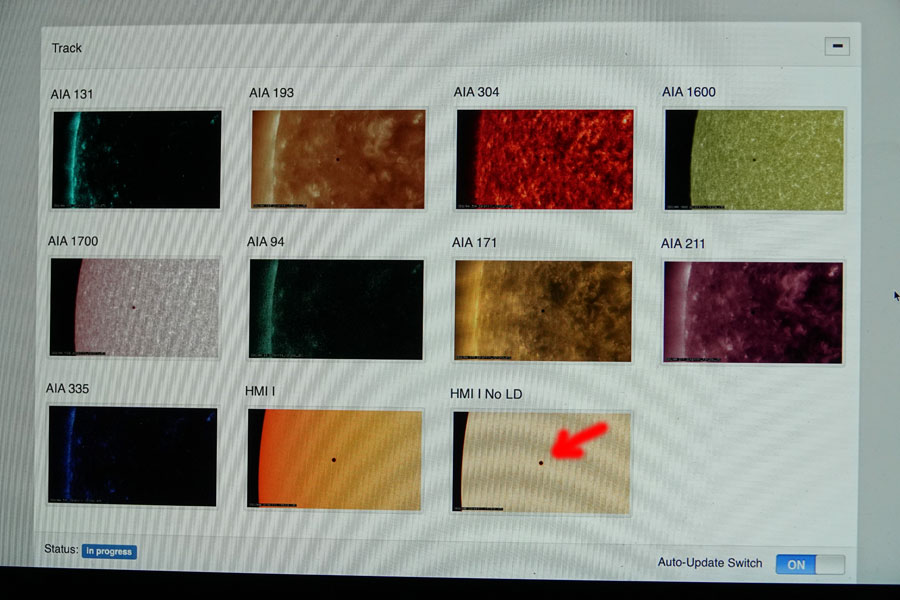 |
|
Laptop showing the NASA Mercury transit 2019 Web page |
Ditto, detail |
Photos of the Equipment
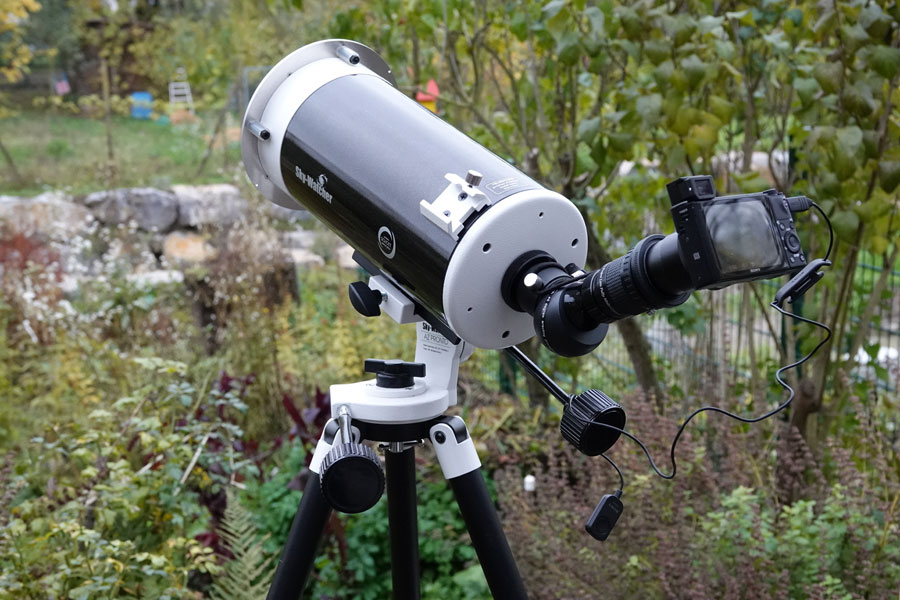 |
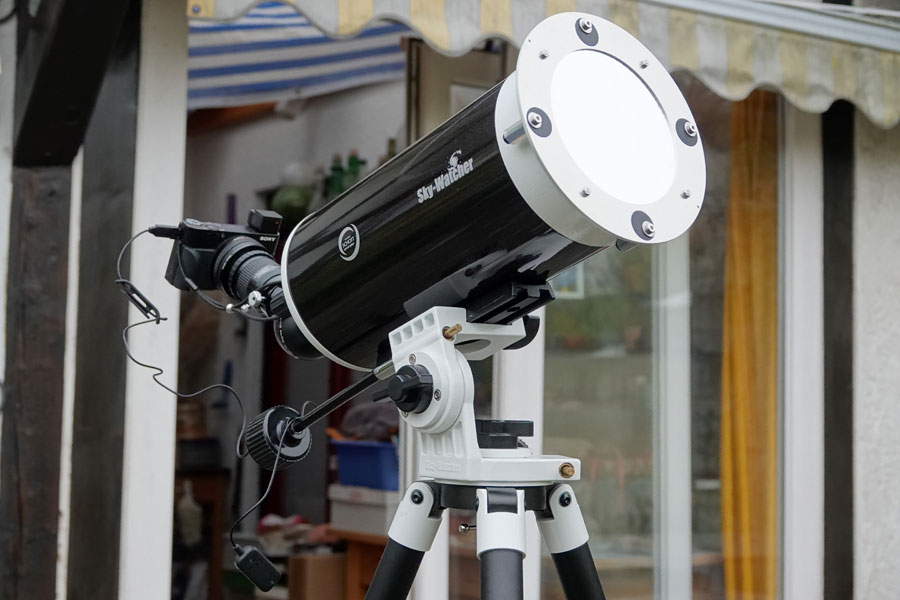 |
|
Skymax-127 on AZ Pronto mount, Amici prism, 32 mm eyepiece and Sony RX100 M4 |
Ditto, front view with solar filter |
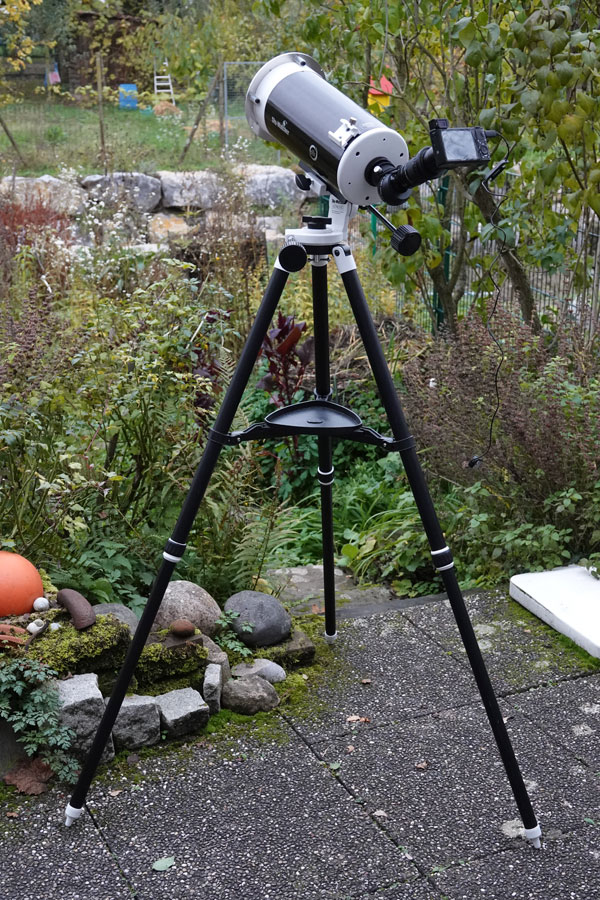 |
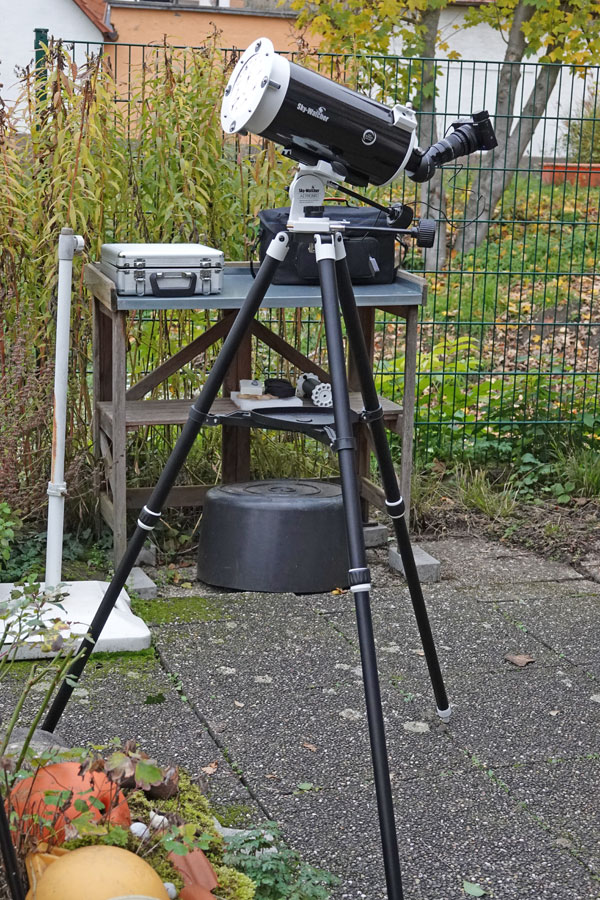 |
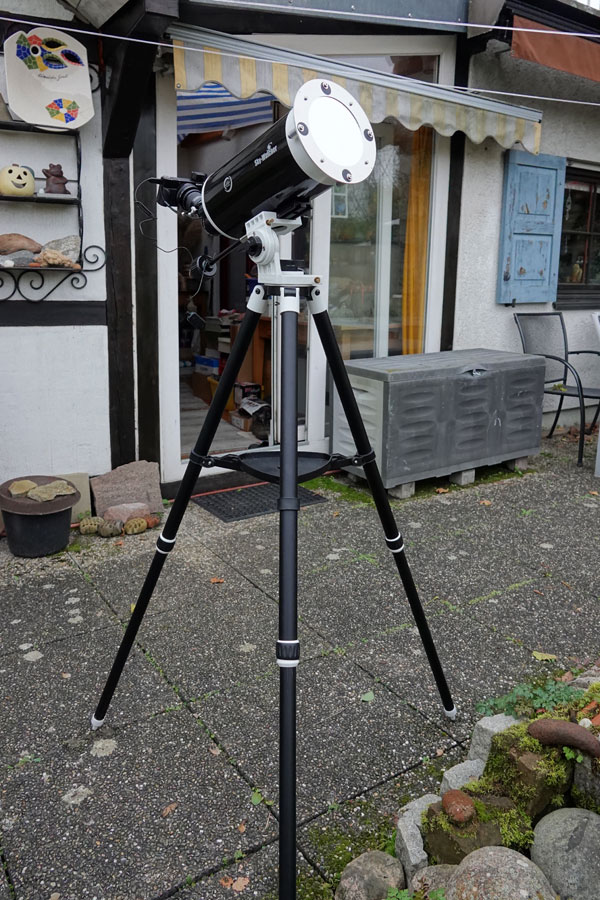 |
||
Skymax-127 on AZ Pronto mount, Amici prism, 32 mm eyepiece and Sony RX100 M4 |
Ditto, side view |
Ditto, front view with solar filter |
Some Technical Remarks
In the following, I would like to make some technical remarks.
Sun Filter
For the observation of the Mercury transit, I bought a euro EMC branded solar filters that use the Baader Planetarium solar film (ND 5), which is suitable for both visual observing as well as for projection photography. The filters are designed for a particular tube diameter range and must therefore be adapted to the respective telescope. They are cheaper than the corresponding filters by Baader Planetarium and much cheaper than glass sun filters (although not as robust). More information can be found on page Solar Filter for Skymax-127 OTA.
Sun Alignment
Because you cannot use the red dot finder for the sun, it is difficult to align the telescope to the sun (special sun finder would have helped, but unfortunately I did not one available), but there was no sun at all....
Eyepieces
Only one of my eyepieces allows me to attach the camera firmly to the eyepiece (using a T adapter), the 32 mm Revelation DigiScope eyepiece. I therefore used this eyepiece for the photos of the sun.
Sony RX100 M4 at the Telescope
The Sony RX100 M4 does not have a filter thread. I therefore bought a Lensmate adapter with 52 mm filter thread und glued it to the front of the lens housing. This way, I can firmly attach the lens to the 32 mm Revelation eyepiece that has a T-mount thread (see page Sony RX100 M4 Attached to Telescope).
I planned to set the distance on the camera to "infinity" and controlled sharpness at the telescope. Iwould have checked the sharpness in the camera's EVF (using screen magnification).
Links
English-speaking Websites with information about the Mercury transit 2019:
- Transit of Mercury (Wikipedia, general): en.wikipedia.org/wiki/Transit_of_Mercury
- 2019 Mercury Transit (NASA): mercurytransit.gsfc.nasa.gov/2019
German-speaking Websites with information about the Mercury transit 2019:
- Merkurtransit (Wikipedia, allgemein): de.wikipedia.org/wiki/Merkurtransit
- Merkurtransit.de (Stefan Krause): www.merkurtransit.de, www.merkurtransit.de/merkurtransit.htm
- ...
| 11.11.2019 |